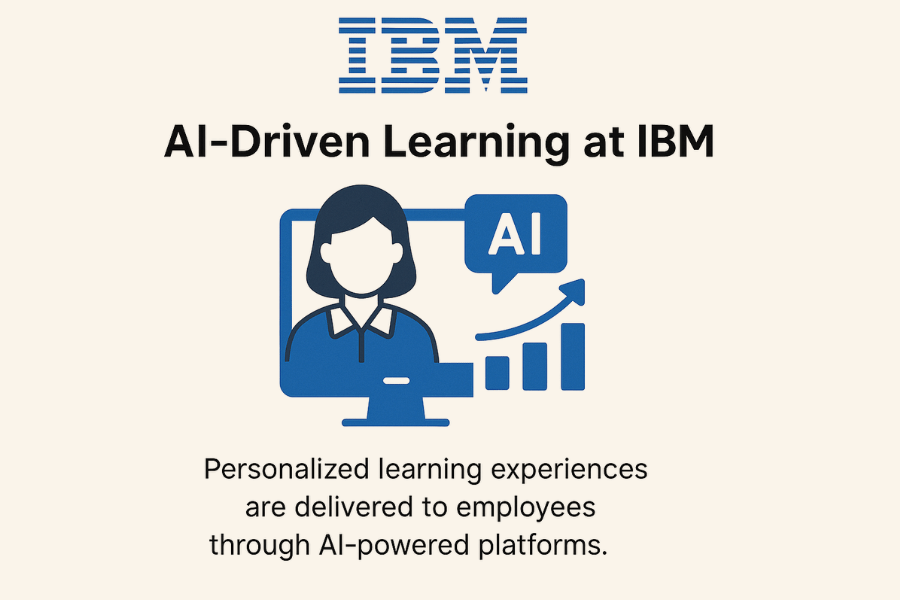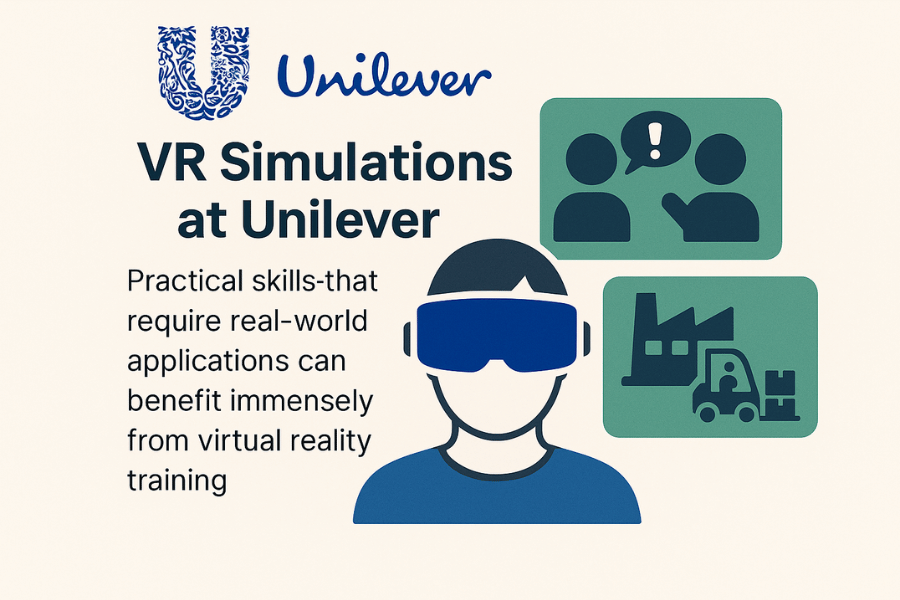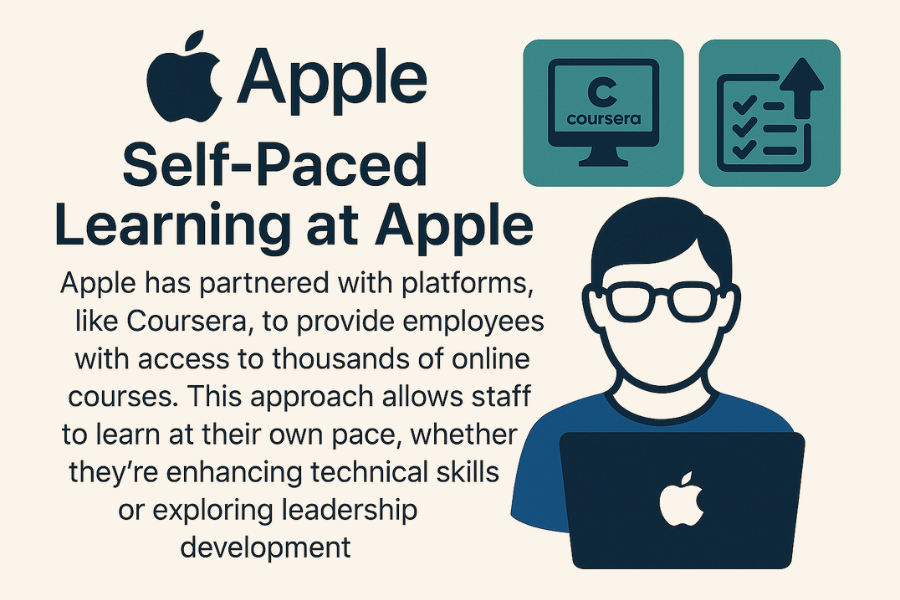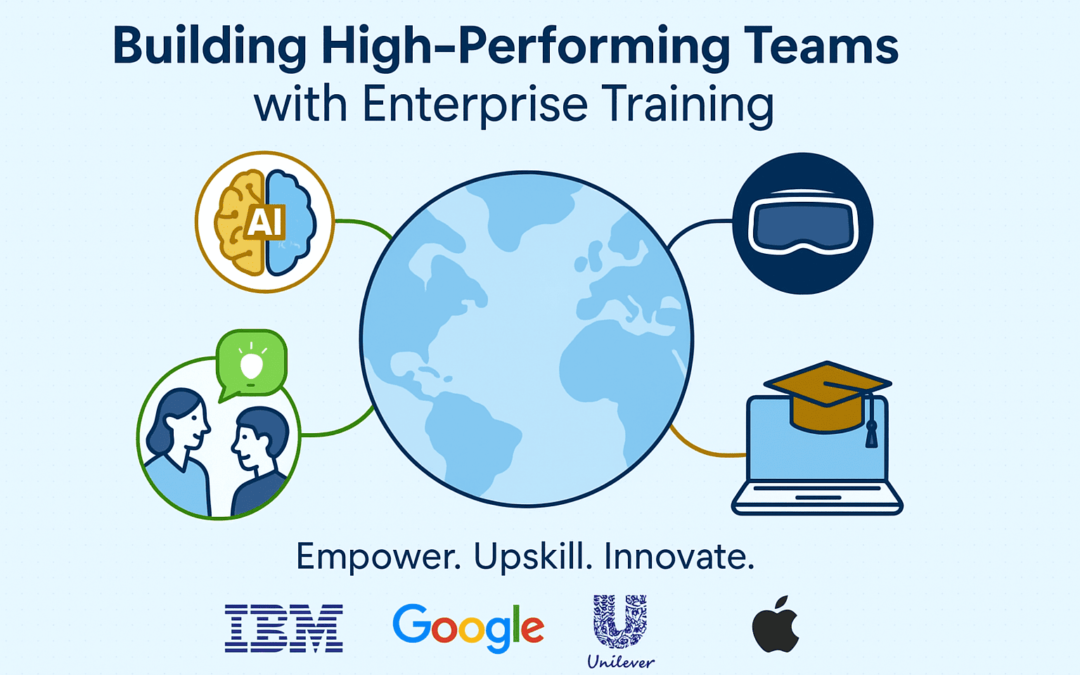How do Fortune 500 companies continuously nurture innovation, drive efficiency, and maintain their competitive edge? The answer lies in a focused investment in enterprise training programs that empower their workforce. Developing high-performing teams isn’t just about hiring the right talent; it’s about equipping them with the skills and tools necessary to thrive in an evolving business landscape.
This article explores how companies, like Google, Unilever, Apple, and IBM, are using tools like AI platforms, VR simulations, and personalized coaching to enhance enterprise training and measure its long-term impact.
Why Enterprise Training Matters
Enterprise training is no longer a ‘nice-to-have’; it has become a critical strategic priority. With industries constantly adapting to emerging technologies and shifting consumer preferences, businesses can’t rely solely on the skills employees brought on their first day. Continuous learning ensures that teams remain future-ready, productive, and motivated.
Key Benefits of Enterprise Training:
- Skill Enhancement: Keeps employees up-to-date with technological advancements.
- Productivity Gains: Reduces errors, streamlines processes, and encourages innovation.
- Improved Employee Retention: Employees who feel supported in their career development are more likely to stay.
- Enhanced Collaboration: Training builds cross-functional knowledge, enabling seamless collaboration among diverse teams.
How Fortune 500 Companies Do It
Fortune 500 companies have taken enterprise training to new heights by adopting advanced technologies and groundbreaking methods. Here’s a look at how some of them are leading the way:
Ai-Driven Learning at IBM
IBM has long been a believer in continuous learning and growth as a way to promote employee retention. The company has pioneered the use of AI-powered platforms, like their AI Academy, to deliver personalized learning experiences to employees globally. These platforms analyze individual learning styles, career goals, and skill gaps to recommend tailored courses.

AI also powers IBM’s efforts in identifying and addressing future skills gaps. By using tools, like AI-driven analytics, IBM can predict which areas require upskilling and deliver highly relevant content to employees. The result? Teams equipped with the latest technological knowledge, prepared to tackle emerging challenges.
Employee-to-Employee Learning at Google
Google’s employee-to-employee learning programs are a testament to the power of shared knowledge.

This unique approach has employees teaching their peers, creating a culture of collaboration and continuous learning. The emphasis on internal expertise allows Google to quickly address skill gaps while fostering a deeper sense of community and engagement.
VR Simulations at Unilever
Practical skills that require real-world applications can benefit immensely from virtual reality training. Unilever has implemented VR simulations in various areas, from factory management to leadership development. These simulations enable employees to practice decision-making and problem-solving in risk-free, controlled environments.

For instance, HR professionals at Unilever use VR to master handling sensitive workplace interactions, while supply chain managers practice optimizing logistics. By incorporating immersive learning experiences, Unilever enables employees to gain confidence before executing tasks in the real world.
Self-Paced Learning at Apple
Apple has partnered with platforms, like Coursera, to provide employees with access to thousands of online courses.

This approach allows staff to learn at their own pace, whether they’re enhancing technical skills or exploring leadership development. Through this method, Apple fosters a self-driven learning culture that empowers employees to take charge of their growth trajectories.
Measuring ROI on Enterprise Training
Investing in enterprise training programs is a significant financial decision, and ensuring a measurable ROI is essential. Here are key metrics and tools to evaluate training effectiveness and long term impact:
Productivity Metrics
Analyze KPIs, such as output quality, problem-solving efficiency, and innovation rates, before and after training initiatives. Have teams been able to implement what they’ve learned to reduce costs or improve speed? Has there been a reduction in errors or an increase in productivity? These metrics can help determine the impact of training on individual and team performance. An example of these KPI’s are as follows: is the flow metrics
Employee Assessment
Use customizable AI-assessment models, like the AI Maturity Index, to capture a baseline of the organization’s current capabilities and track improvements driven by new training efforts. Such tools measure employee skills, engagement, and sentiment towards their roles and the organization. This process provides insights into how training drives knowledge, improves quality, and fosters innovation within the enterprise.
Business Impact Analytics
Monitor revenue growth, customer satisfaction, or operational savings linked to specific skill advancements. For instance, Unilever has linked its VR simulations to improvements in manufacturing efficiency and decision-making speed.
Ensuring Long-Term Success with Continuous Learning
Sustainable training programs are not one-off initiatives. Companies, like Google and IBM, have demonstrated that fostering a culture of continuous learning is vital for long-term success.
Here’s how organizations can build such an environment:
-
- Encourage Knowledge Sharing: Implement peer-to-peer learning models like Google’s.
- Adopt Flexible Training Formats: Combine self-paced studies (like Apple does via Coursera) with interactive methods such as VR or in-person workshops.
- Leverage Advanced Tools: Use AI to personalize content and forecast future training needs.
- Commit to Leadership Development: Offer coaching programs that prepare future leaders for complex business challenges.
The Cutting Edge of Enterprise Training
Enterprise training powered by technology is transforming how organizations develop talent across industries. From IBM’s AI-driven personalized learning to Unilever’s immersive VR simulations, these initiatives equip employees to handle modern business challenges with confidence.
The benefits are undeniable: companies that innovate in learning and development experience improved performance, greater adaptability, and stronger teams across all functions. By fostering continuous growth, providing essential skills, and using data to refine training strategies, businesses build agile, high-performing teams ready to excel in an ever-changing landscape.
To maximize these outcomes, it’s essential to integrate expert guidance alongside advanced training tools. Partnering with external specialists, like RTculate, leaders in business coaching and enterprise development, can significantly enhance your organization’s training programs. Their tailored coaching solutions elevate team capabilities, ensuring employees are not only prepared but empowered to thrive.
Curious how to take your enterprise training to the next level? Explore how RTculate’s expert coaching, scalable learning platforms, and professional upskilling opportunities can empower your workforce, keeping your organization ahead of the curve today.
Additional Information for Professional Learners
For individuals and teams looking to deepen their technical expertise, RTculate and Ateneo De Davao – ALL AI Fundamentals: Pioneering GenAI for All course. This self-paced program provides employees with essential knowledge of AI technologies, helping them stay ahead in today’s tech-driven world. Incorporating such resources into your training strategy ensures a well-rounded approach that addresses both organizational and individual growth.



